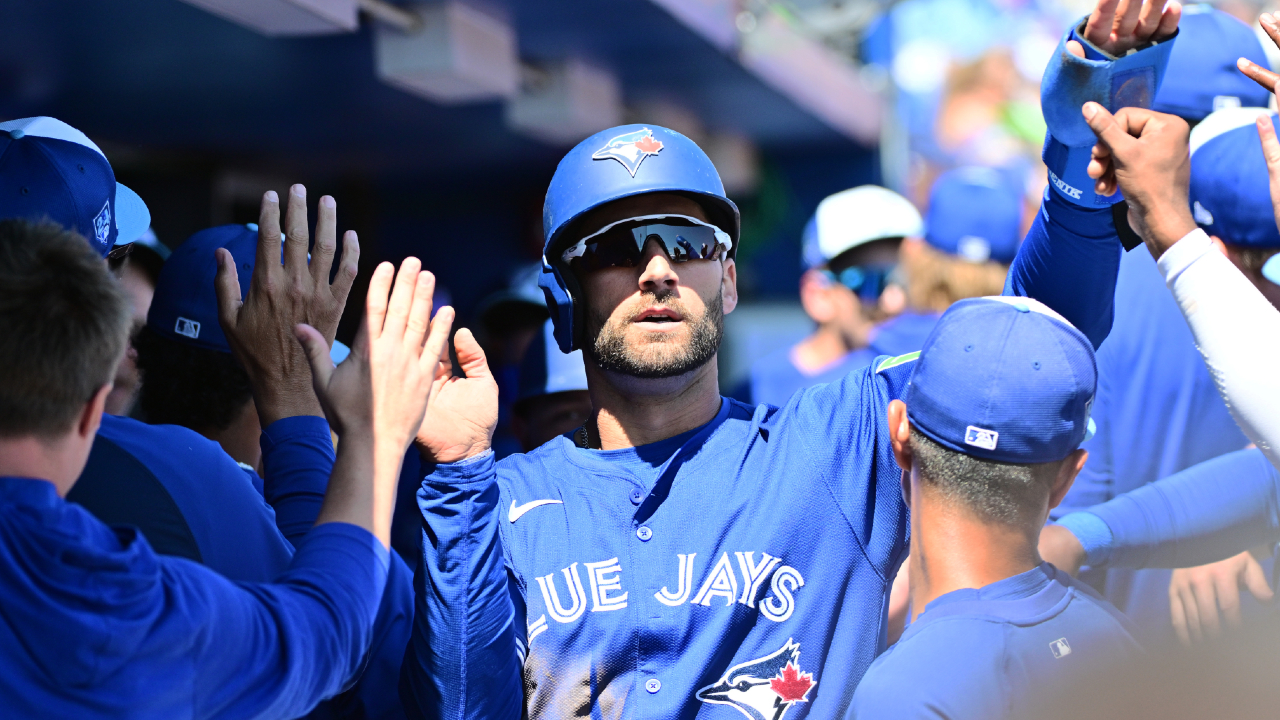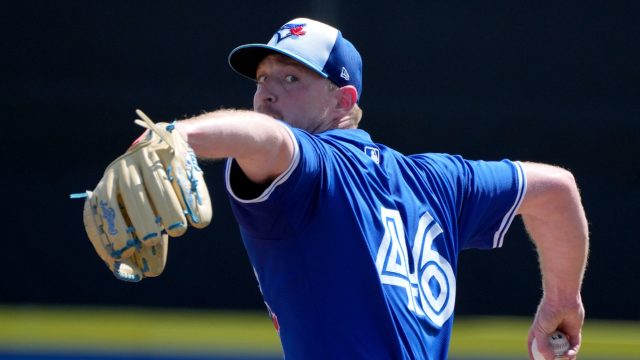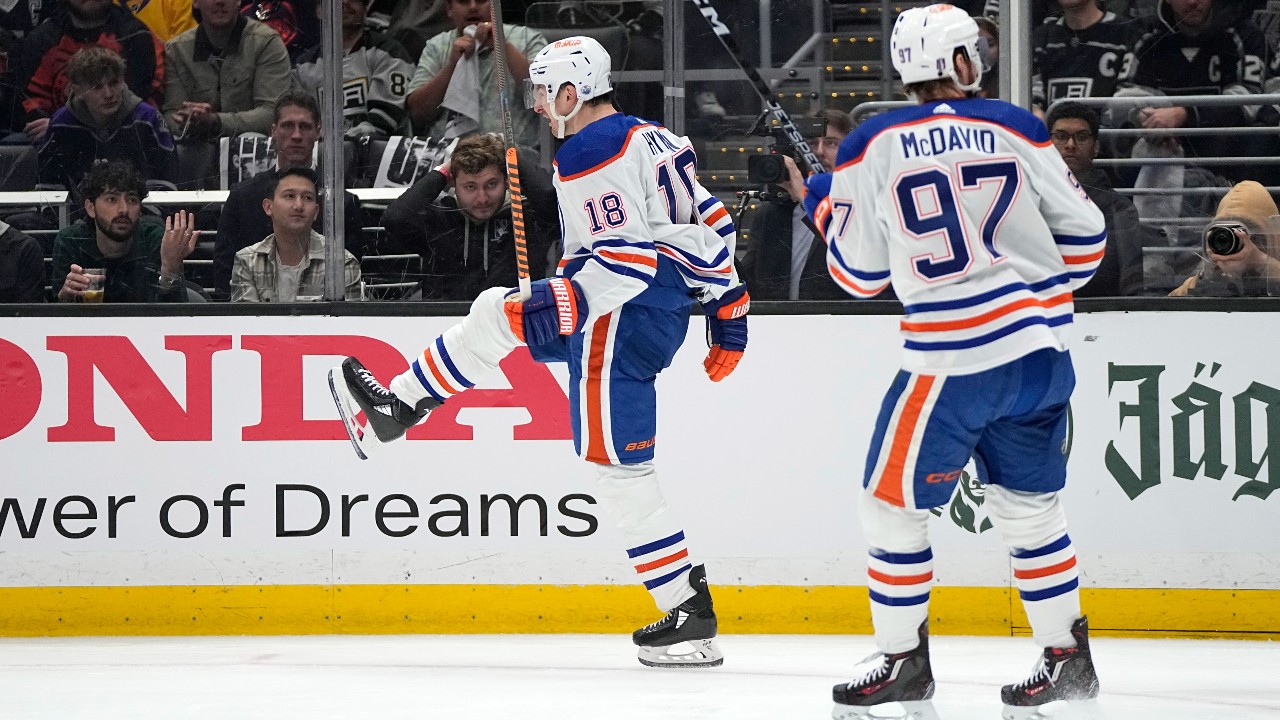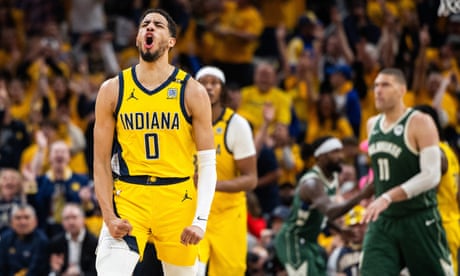
ST. PETERSBURG, Fla. — Each baseball season is a trip in and of itself. There are plans and goals and hopes and expectations that play out in 162 games over 186 days, a near-constant blur of success and failure, of elation and frustration. By the time it’s over for players, coaches, executives and staff, everyone needs home for a rest. If things hit just right, maybe there’s a parade at the end.
At the same time, each baseball season is also a singular trip within a wider journey. Teams are either building or rebuilding, seeking to either open, maintain, extend or shut a competitive window. In that way, individual years are interconnected as segments of progression to or regression from a final destination, the outcome not always by design.
All of which brings us to the Toronto Blue Jays at the launch of the 2024 campaign, one deep into a quest that’s produced three playoff appearances over the past four years, although not a single victory in them.
They once again possess the talent to qualify for the post-season, even as rivals in the AL East and the wider league strengthened around them. Whether they get there, and fare better this time upon arrival, is to be determined.
There’s some enduring heartbreak around them from the one-game-short dagger of 2021, the 8-1 collapse of 2022, and the Jose Berrios-pulled-early-debacle of 2023, which was cruelly followed by the Shohei Ohtani fever dream. Still, the past is only the present if the Blue Jays allow it to be and a significant portion of their off-season was spent on ensuring that wouldn’t be the case, even if they are where they are because of what’s happened the past few years.
“That’s a tough question,” ace Blue Jays right-hander Kevin Gausman says of how to draw from past failures without being weighed down by them. “You try to learn from them. Try to let them fuel you. You want to remember the past … but you also have to forget about it and not let it define who you are and what this team is because we don’t know that yet. It’s a new year.”
Sentiments echoed by George Springer.
“We expect a lot out of ourselves, so when it doesn’t happen, you have to look back on it and try to process why and how and what could I have done better,” he says. “But every year is different. Every challenge is new. There’s going to be stuff that happens this year that I’ve never seen, that (Justin Turner), he’s been playing for 16 years, that he’s never seen. It’s about staying in the moment, in my eyes. Yeah, I understand the season didn’t end the way that we wanted it to. But it doesn’t end that way for 29 teams every year. It kind of is what it is.”
There is certainly no going back and changing what’s already happened, leaving the pursuit of a different outcome as the only option. To that end, the Blue Jays worked hard to clarify their internal communications around in-game decision-making with players during weeks of meetings about the playoff fallout.
“We’re grown men and we talked,” is how Berrios put it. “We were clear with everything. … I just asked and they responded to me honestly. That’s the only thing I wanted, just be honest with me, be transparent, and they were. That’s why we’re able to be on the same page now and turn that bad experience or situation. It’s a new year, new opportunity and I think we’re going to start really well.”
Those conversations also led to a revamp around game-planning for the offence, which is now headed by bench coach Don Mattingly, along with hitting coach Guillermo Martinez and assistants Hunter Mense and Matt Hague. Attack plans are to be more individualized and specific to each player, designed with each pitcher they may encounter in mind. The early returns from spring were good but the real test is only beginning.
A more productive offence will be needed to compensate for any potential regression in the club’s pitching, its primary strength a year ago. There’s been a focus on base-running after they finished fifth in outs on the bases in 2023 at 57. Returning from what was arguably the best defence in the majors is one Gold Glover in Kevin Kiermaier, while Isiah Kiner-Falefa and others will need to compensate for another, Matt Chapman, who left.
What Bo Bichette believes is helping to tie everything together is a higher degree of “professionalism” in “how we go about our day everyday preparation and things like that.”
“If we want to get to where we want to get to, which we do, professionalism and consistency in the discipline just has to tick a notch up,” he continues. “There’s really not much else to it — consistency and discipline. In our field of work, competitiveness, too, should top all of that stuff off, going out there and competing at the highest level you can. It’s very simple.”
Less simple is what lies ahead for them on their current journey.
Seven players — including Danny Jansen and Yusei Kikuchi — will be eligible for free agency this fall with another 10 — Bichette, Vladimir Guerrero Jr. and Jordan Romano among them — able to test the market on the next one. That’s 65 per cent of the current roster, which is a problem because of the way the team is constructed and a lack of high-end prospects in the farm system to help replace them.
Mark Shapiro, the Blue Jays president and CEO, often speaks of finding the right balance between the three population pools that stock big-league clubs: young players with upside largely happy just to be in the majors; players in their prime who are carrying the load as they enter their prime earning years; and veteran players who are all about winning and are giving of themselves and their knowledge.
The Blue Jays right now appear too heavily weighted toward the last group, with not enough young players on the cusp of graduating into a middle group that is facing decimation over the next two winters. Lefty Ricky Tiedemann and second baseman Orelvis Martinez are on the cusp and will help alter the equation, but the club will need plenty of near-term help it doesn’t at this point have in the farm system.
“Really feel good about the way we’re developing and feel that we’re getting better and better in the way we’re drafting, as well,” says Shapiro. “The best answer I can give you is we spend a lot of time and, at the end of this season, we’ll do the same thing and evaluate. Right now, we feel pretty good about the team we’ve got for the next two years. And then we’ll answer that again next off-season, how we think about it at that point in time. But we’re making strides and feel good and really encouraged by what’s happening in player development and scouting levels.”
The Blue Jays need a farm-system payoff to happen fast enough that they aren’t forced to veer from their current path and change directions two years from now. That’s one way the 2024 season is connected to what happens in 2025 and ’26, just like what happened last season ties into this one, even if each season is a trip all its own.
“The biggest things we’ve got to think about are the reality of 162, that there is something coming that we’re not expecting,” says Shapiro. “There is some challenge that’s going to come up that we’re not ready for, that we’re going to have to adapt, we’re going to have to adjust. Someone’s going to have to step up that we’re not currently talking about at this table right now. That’s what’s ahead of these guys. That’s what’s ahead of us right now. It’s not how are we going to deal with a devastating loss at the end of last year. That’s last year. It’s gone. Was there something to take from that? OK. We had those conversations, we made those adjustments and let’s go. We’re moving forward.”
On to the latest trek on their current journey.







